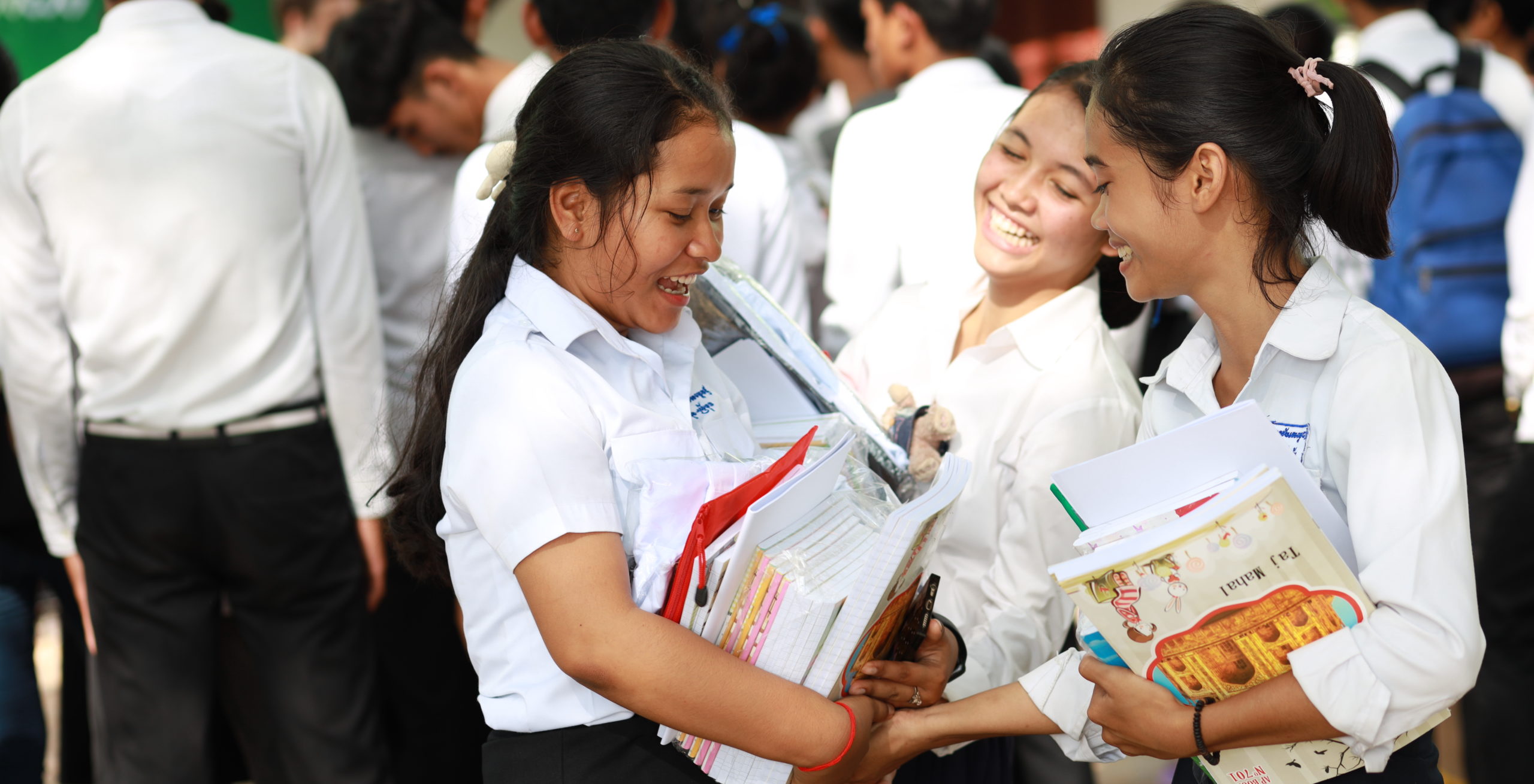
It’s always challenging to find benchmarks to compare our work against in Cambodia. We always feel like we’re doing well, but how well are we actually doing? Which areas should we be focusing on and how do we make and measure those improvements?
The government recently published statistics for middle school and high school completion rates (pre-Covid). We evaluated our own completion rate based on the number of students who enter our project in grade 1 and go on to finish both middle school or high school. Some challenges appeared.
There are 3 PLF project areas we looked at:
- Knar which is rural
- Chey, which is rural but much closer to the large urban center
- PLF’s urban students in Siem Reap city
First, we’ll look at Rural High School Completion:

It’s good to see both our rural projects exceeding the national average for high school completion for rural students and above the national average for all of Cambodia, including urban centres.
In particular, students at Chey are remarkably well, with around 40% of our Chey students completing high school – more than double the norm for a rural area.
Knar, whilst it lags way behind Chey, still compares well to other rural areas. At Knar, we have always had the challenge to get more students graduating high school. As we will discuss shortly, if we can get our students through middle school, we already see we can get most of them through to graduation.
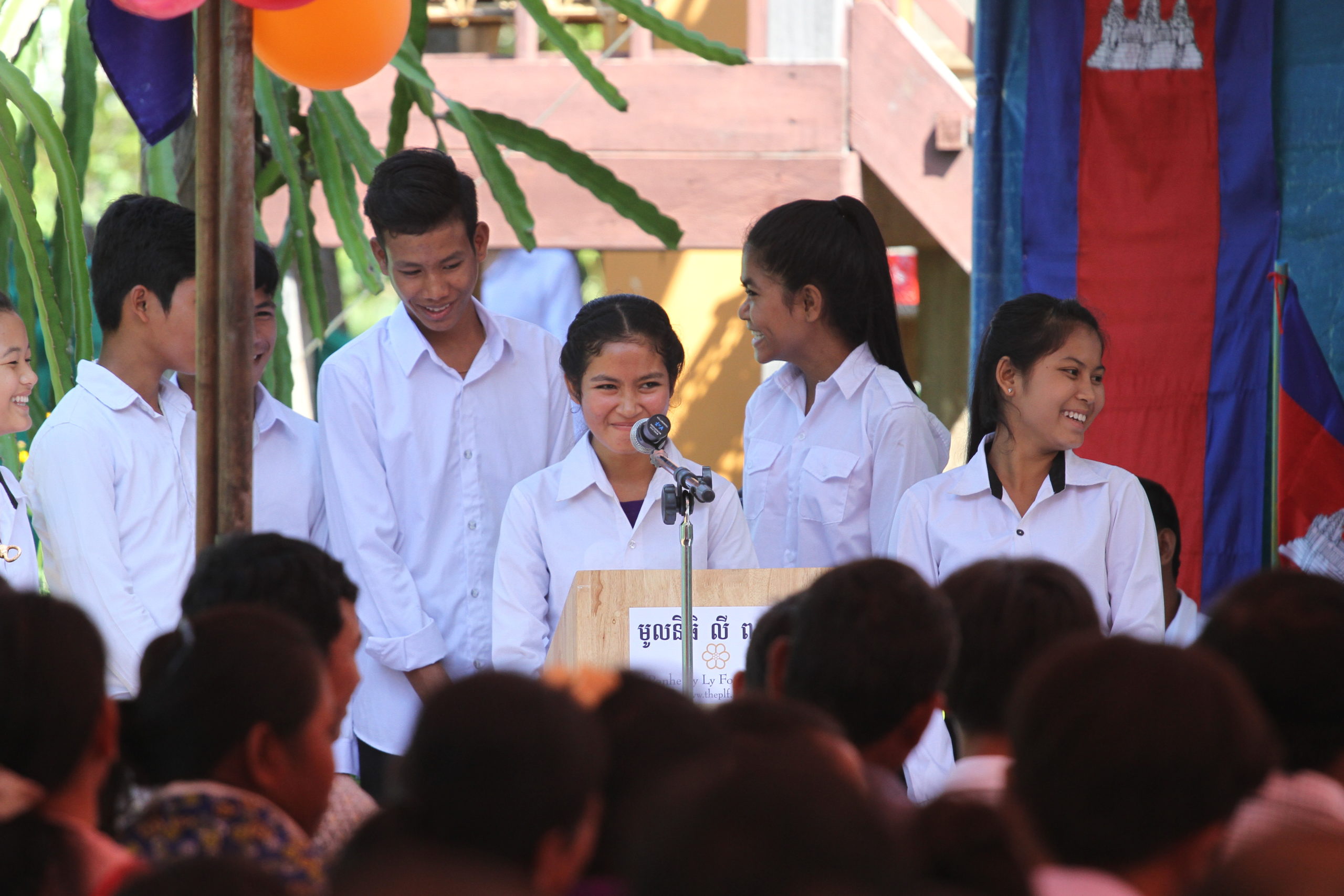
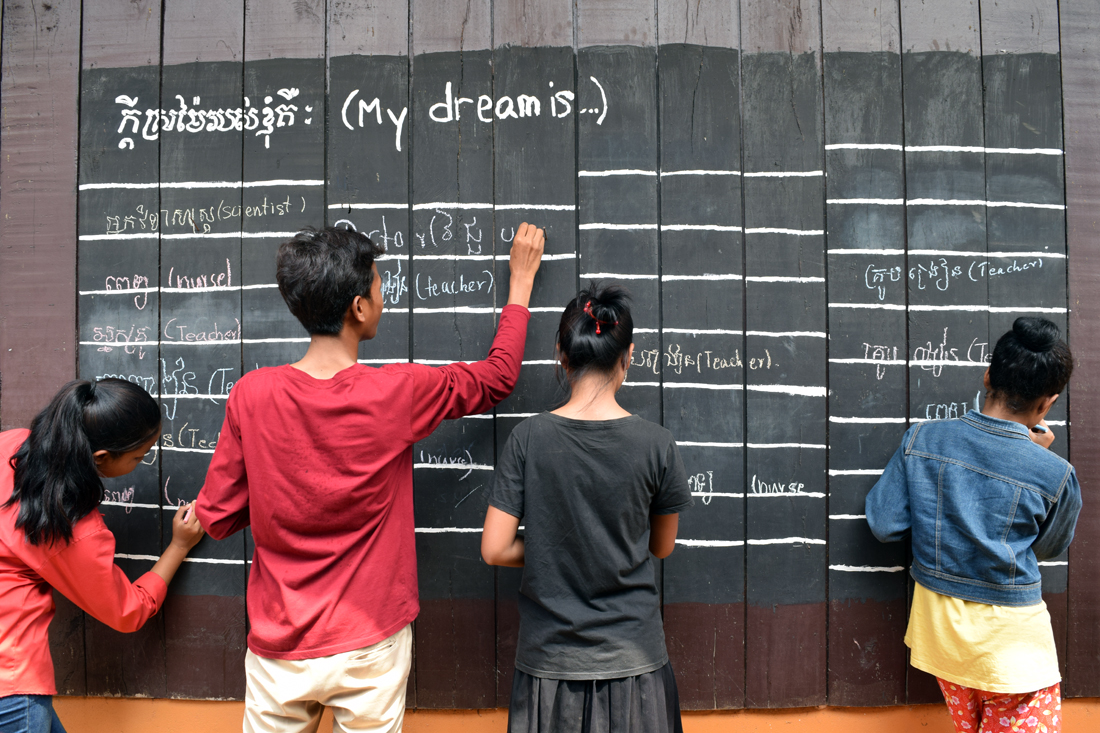
Now let’s look at Urban:
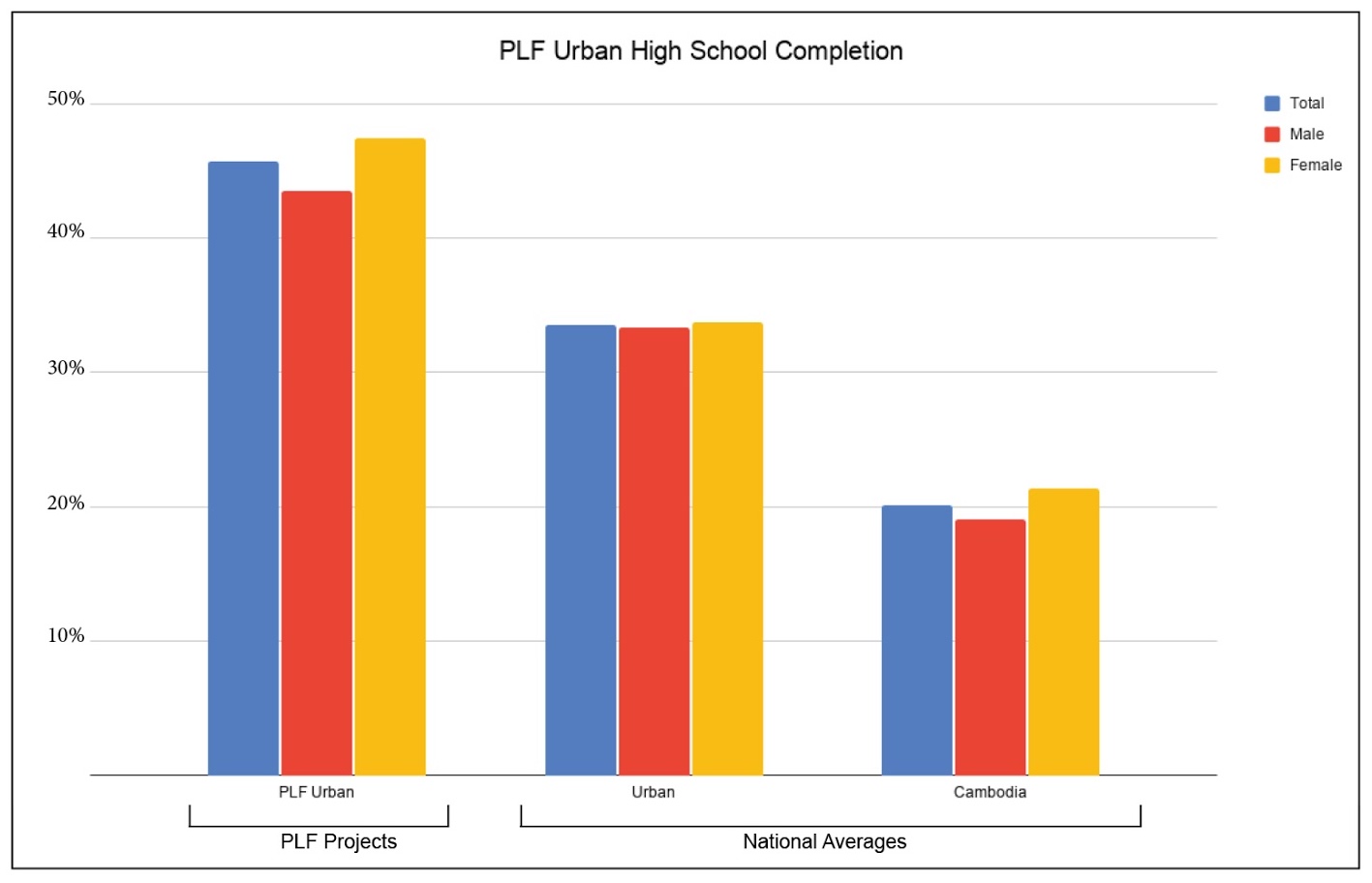
PLF’s Urban students compare equally as favourably, with an excellent high school graduation rate even when compared with all other Urban students across Cambodia (~12% higher). Our urban students are still most likely to complete high school, but our Chey students aren’t very far behind at all. This is reflected in the makeup of our University scholarship students too with about 40% being Urban graduates, 40% Chey graduates and 20% from Knar.
It’s good to see that the completion rate for our urban students is well above the national average. Our Urban student population is a less visible part of our program but putting support behind disadvantaged students in the city is a big part of what we do, and it’s working.
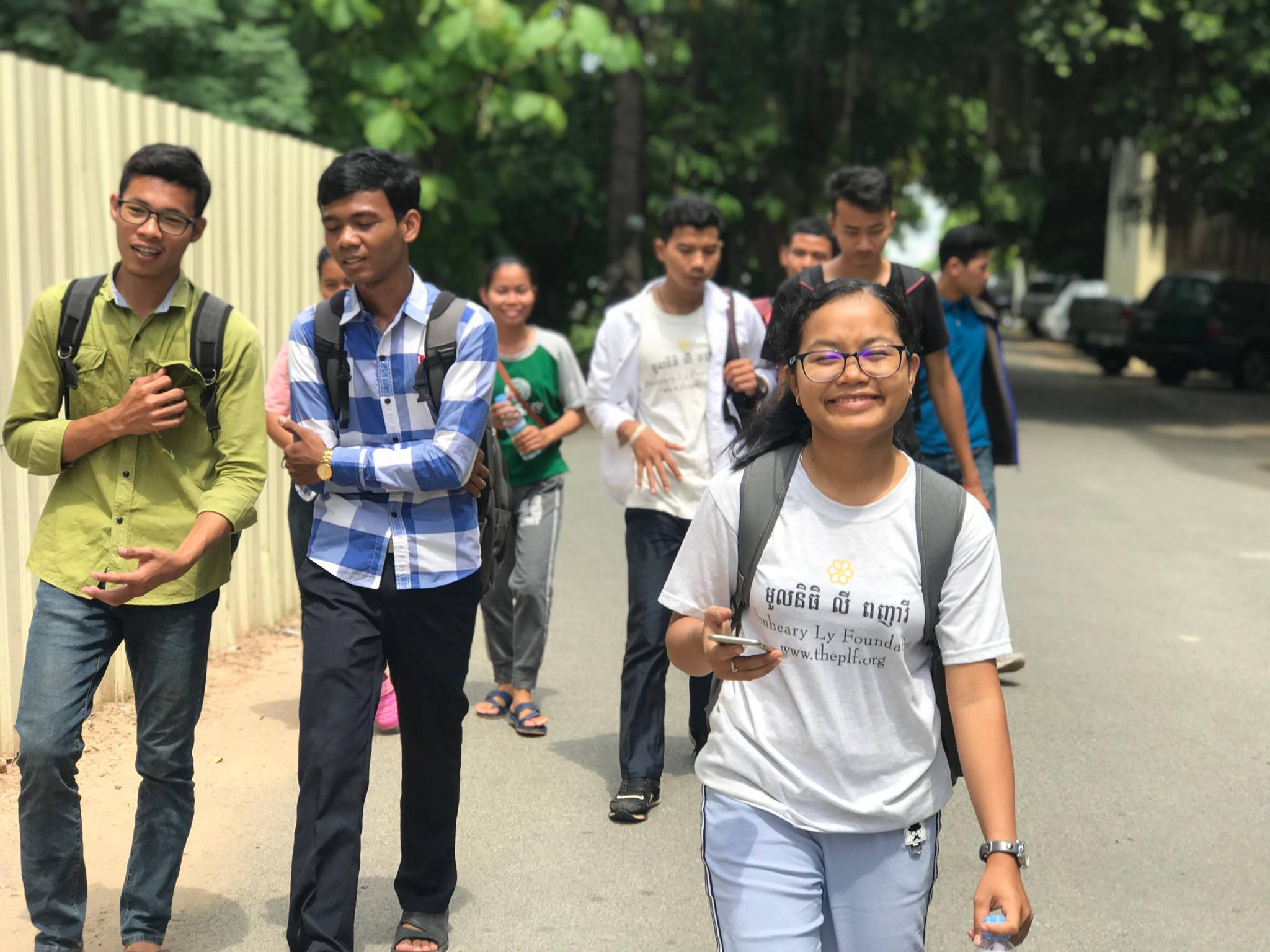
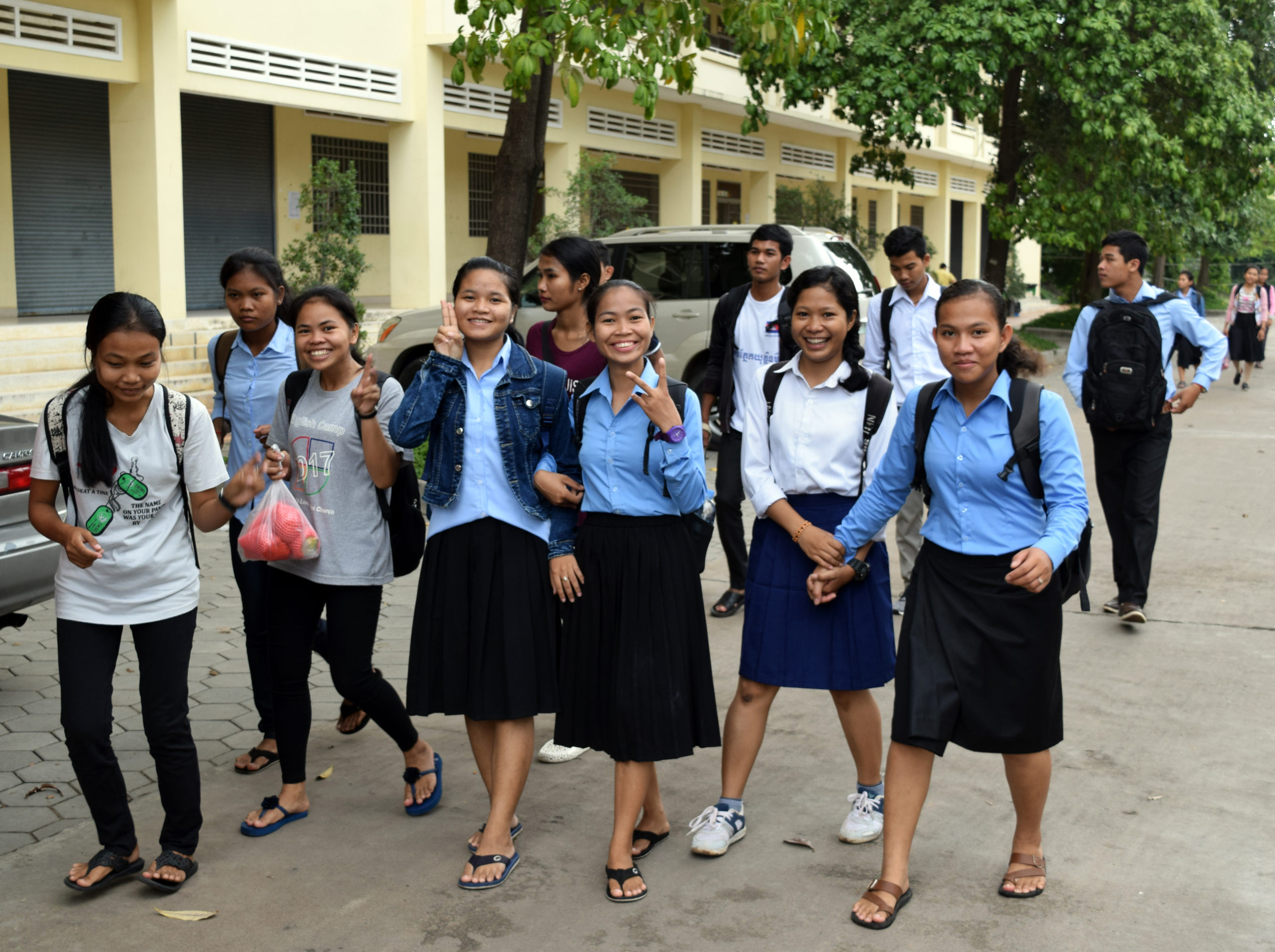
Look at those yellow bars and see how much better the girls are doing than the boys, and that’s everywhere across all PLF projects for the last 15 years, and nationally too. It’s more pronounced in rural areas, but even PLF’s Urban girls are outperforming the boys, which is more unusual in urban areas nationally.
We can see this too in the numbers of girls we’re awarding with University and high school scholarships. Usually 60-70% of both applicants and awardees are girls. We’ll talk in a little more detail about why we think this is when we look at middle school.
As we touched on above, our middle school completion rate is more of a challenge, particularly in our rural projects at Knar and Chey. We also see a much larger gap between our boys and girls, with girls faring way better than boys in both locations. Why is that?
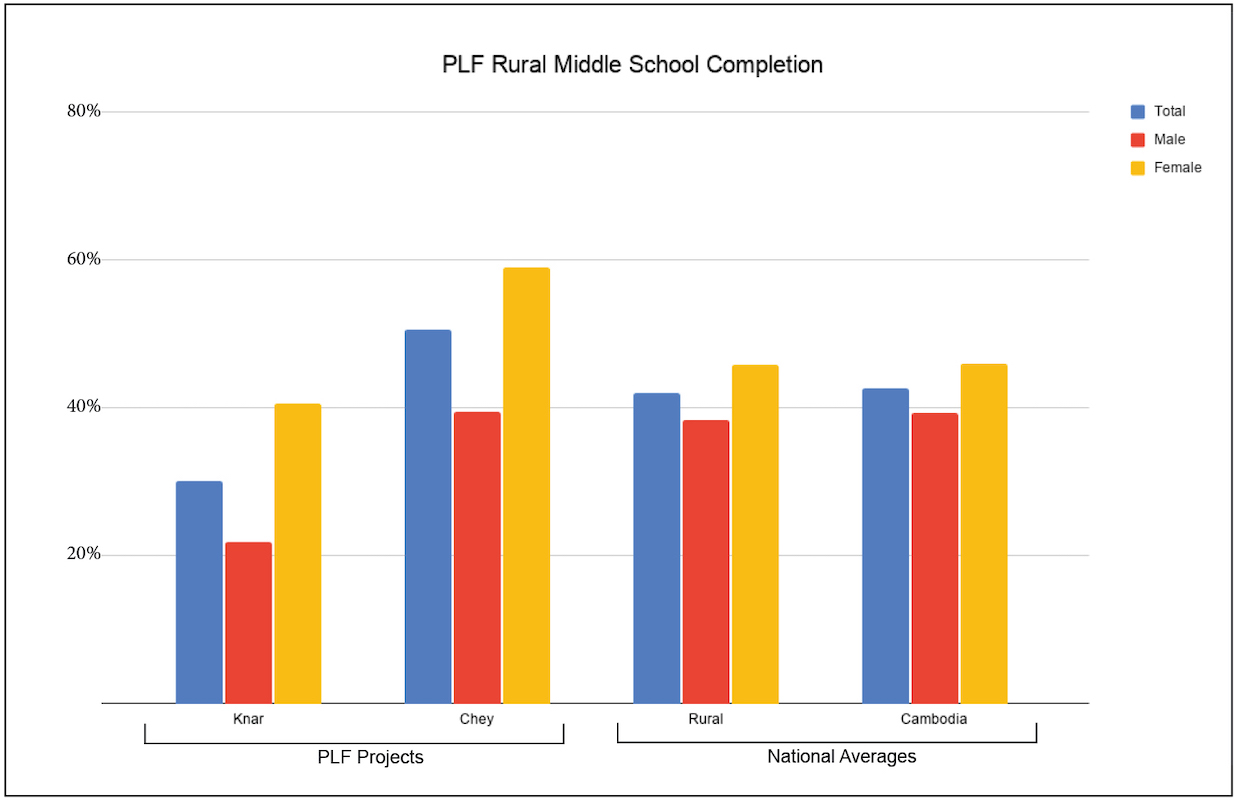
In the countryside when boys reach middle school they have become old enough and strong enough to help the family with some of the more physical jobs on the farm, and even in certain circumstances be sent to work as laborers on other farms to earn an income for the family. School falls by the wayside. This continues to be a challenge for all our middle school students, but specifically our rural boys and it’s something we’re focusing on moving forward.
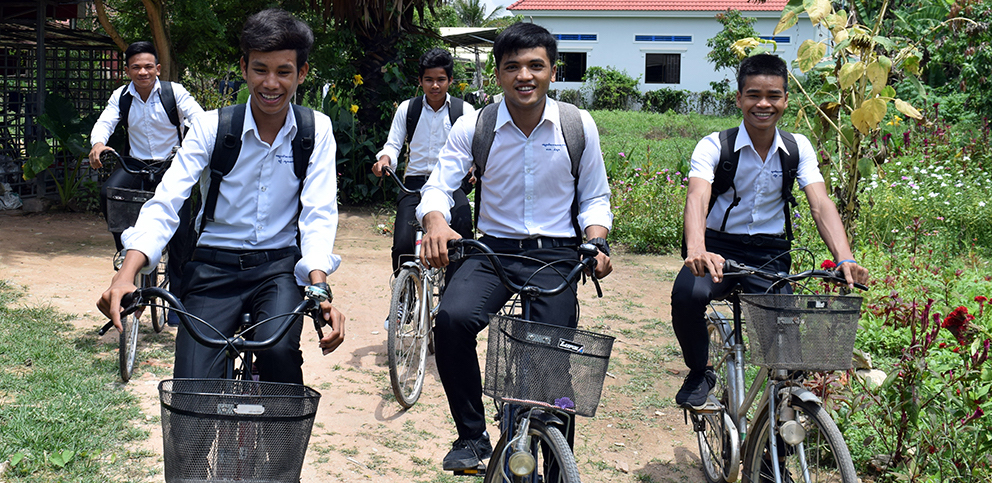
At Knar we have work to do on retention during middle school. Not only with our boys, but with the girls too. Overall, our numbers are below the national average. The community there is transient in nature with many families constantly on the move, which impacts these numbers significantly. Some of our “dropouts” have very likely moved elsewhere with their families and potentially continued school elsewhere in a different district or province, and we’re just not able to get that level of data.
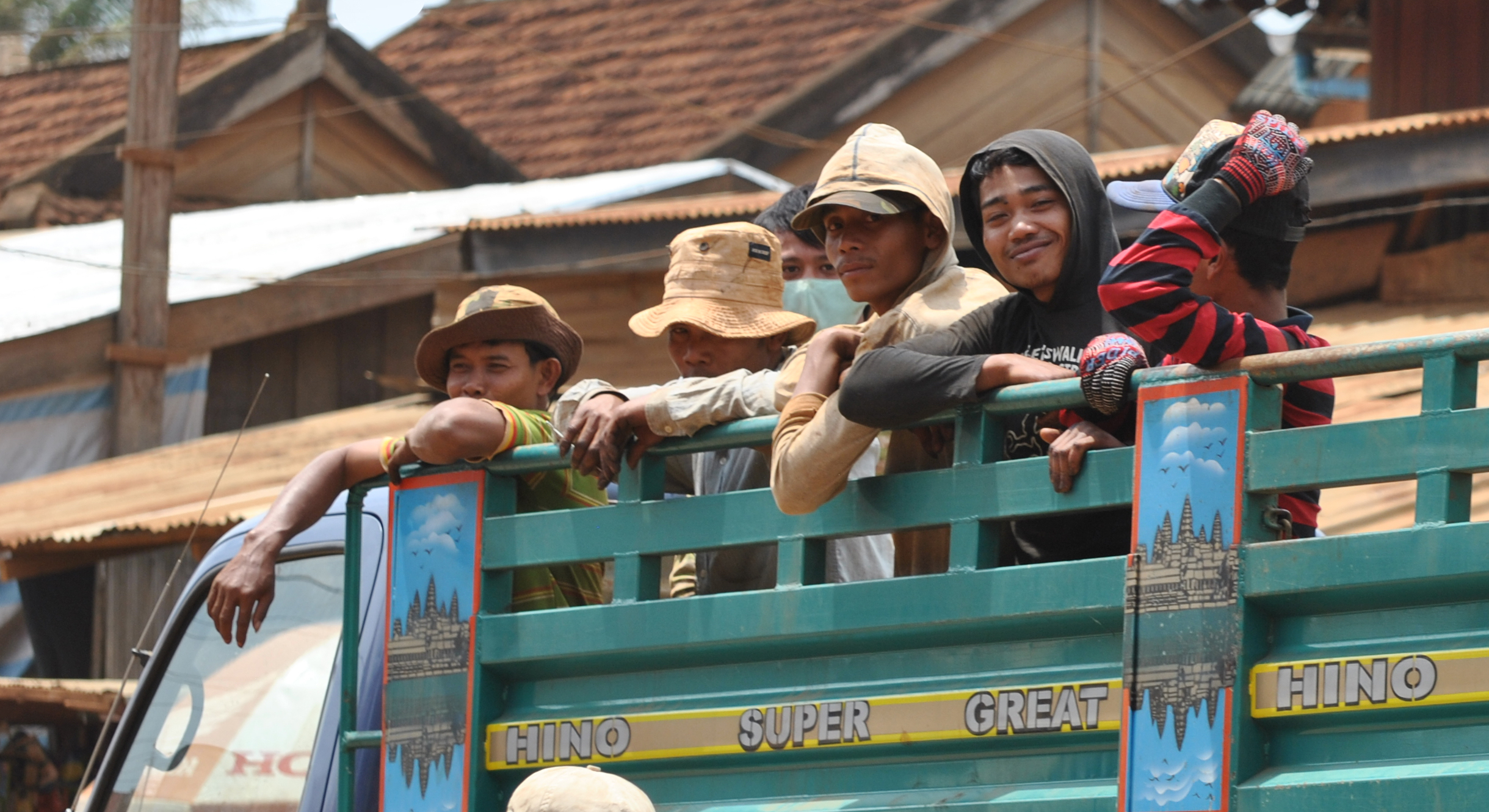
Another big challenge is the draw of work, especially for the boys. There isn’t really much work to be had in the village itself and so those that do work can’t just do it after school. They go by truck to the mango farms or potato farms in the morning, returning in the evening with their $5 wage, which will feed their family that day.
We can’t argue with a family’s need to keep itself fed and we can’t argue that the labor of middle school boys is the easiest way to address that problem. But that can’t stop us from also arguing for the education of these students. Certainly putting in the Learning Center at Knar Village was a major step in the direction of supporting our middle school students, but it will be some years before we can measure the impact on retention. We’ll continue to hyper focus on this challenge, especially at Knar.
Getting our boys up to pace with the girls is also a challenge at Chey where 20% more girls are completing grade 9 than boys, for the same reasons but in fewer numbers.
So let’s look more closely at this Middle School Problem
Our Urban middle school retention rate continues to be good and sits comfortably above the national average. There’s also less of a gap between the boys and girls in the city. For urban students who must work, it’s more readily available and even possible to work in the evenings, or half days as construction laborers for example, without having to travel.
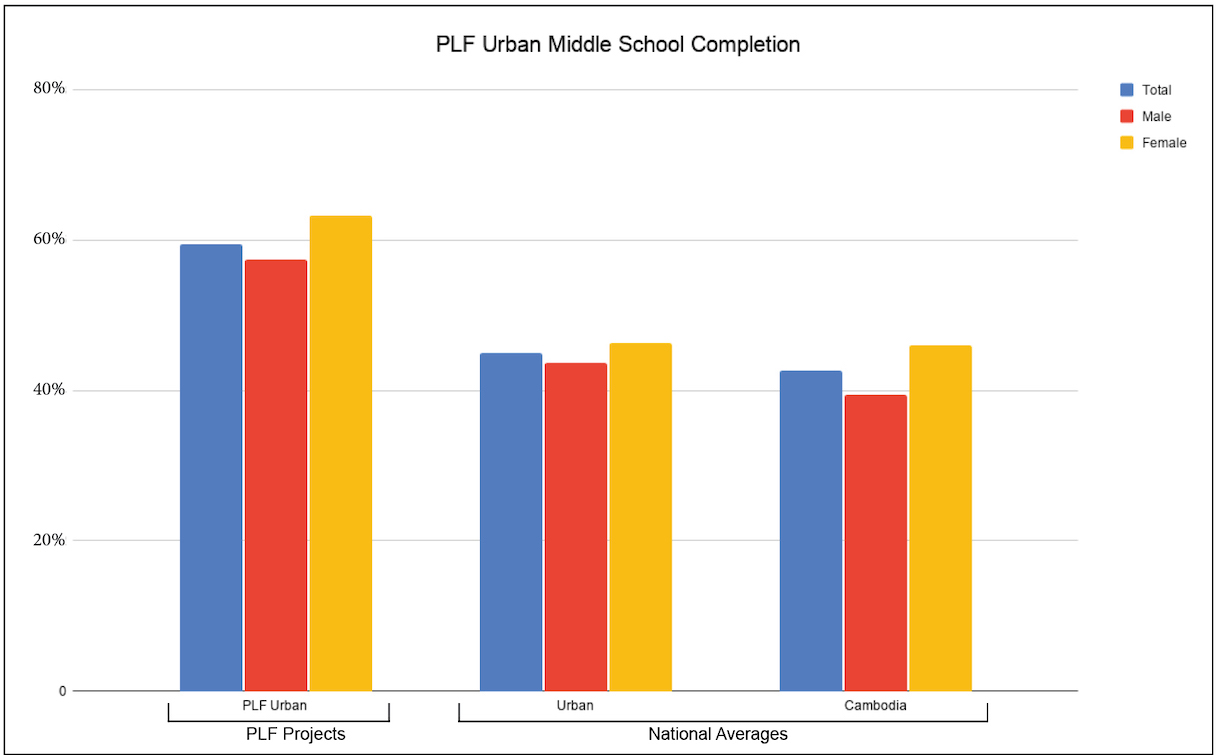
We’d rather that no PLF student had to resort to working whilst in middle school, but at least in Urban areas if the family are forced to go down that route, there’s a greater chance for them to still be able to attend school.
Of interest to us is what percentage of students, who upon completing middle school, are making it through to high school. The question is always “where are we losing them”?
In the City, more PLF students are finishing both middle and high school than the national average, but the drop off between the two is running on par for their Urban counterparts across the nation.
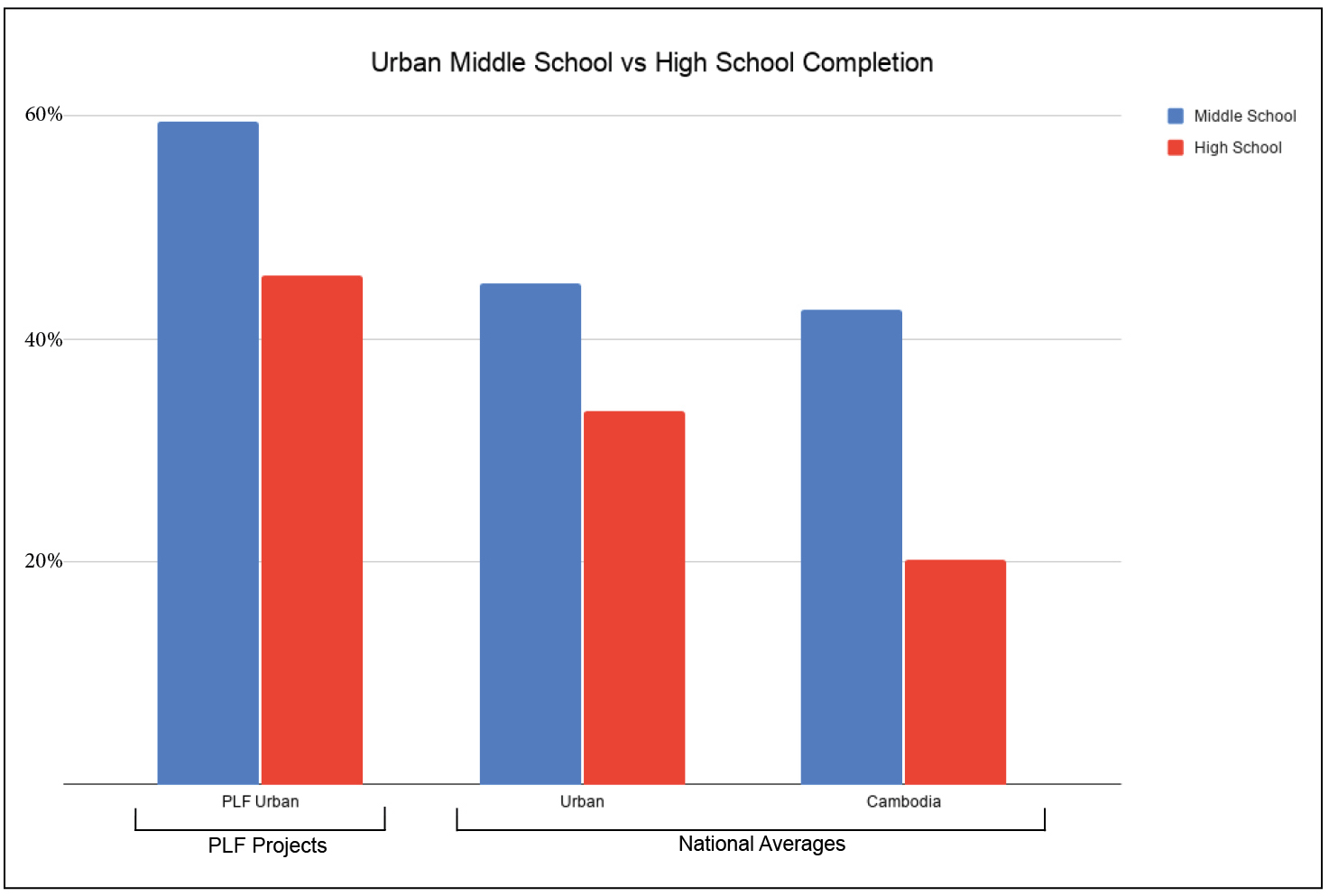
Looking at rural students, we have much less of a drop off than national averages.
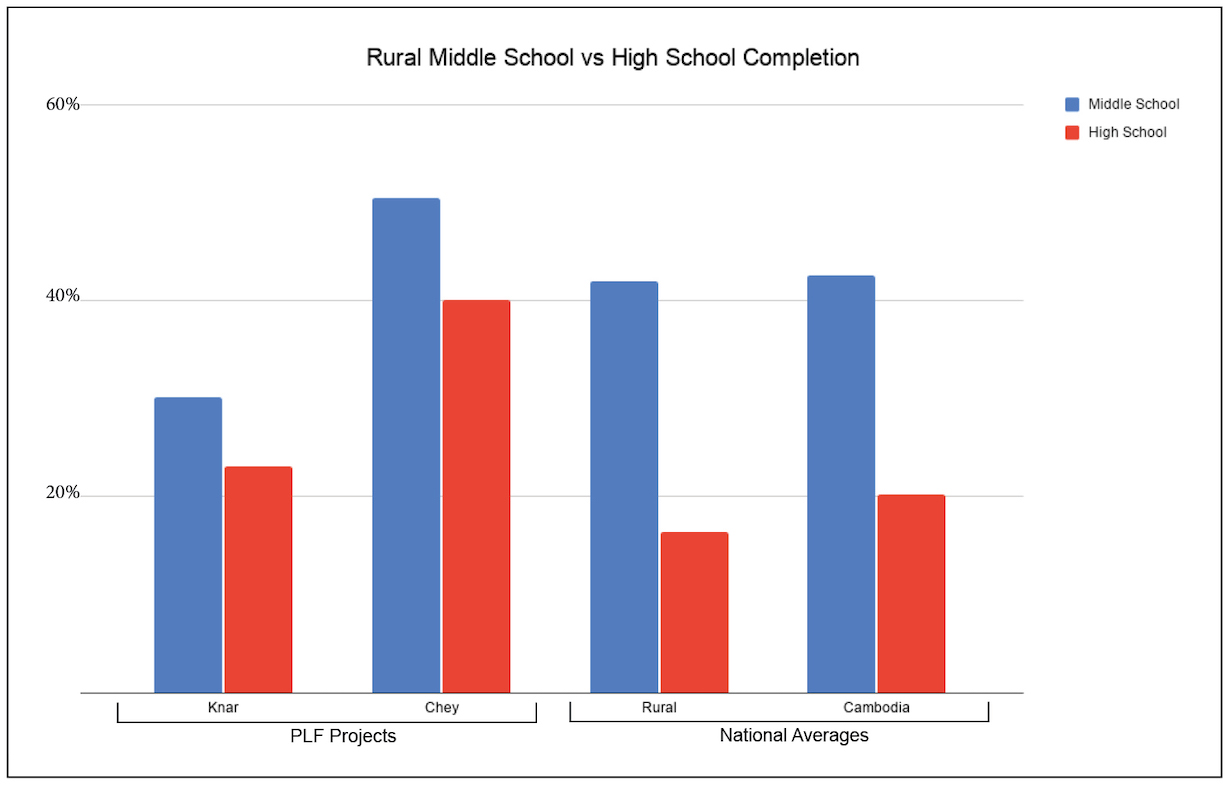
This data shows us quite clearly where our work needs to focus.
Clearly if we keep our students through middle school, there’s a greater chance that they can finish high school. Greater than the national average for sure. This phenomenon is especially apparent in our rural projects at Chey and Knar.
Our rural students leave primary school on fire; PLF programs in rural primary schools are producing the desired results. Students who make it to high school have a wide array of programs available to them (Tech, Workshops, extra classes) to help them stay in school. In the middle there’s definitely more that we need to be doing to keep students, especially boys, from giving up hope.
If we isolate the boys it’s even more striking.
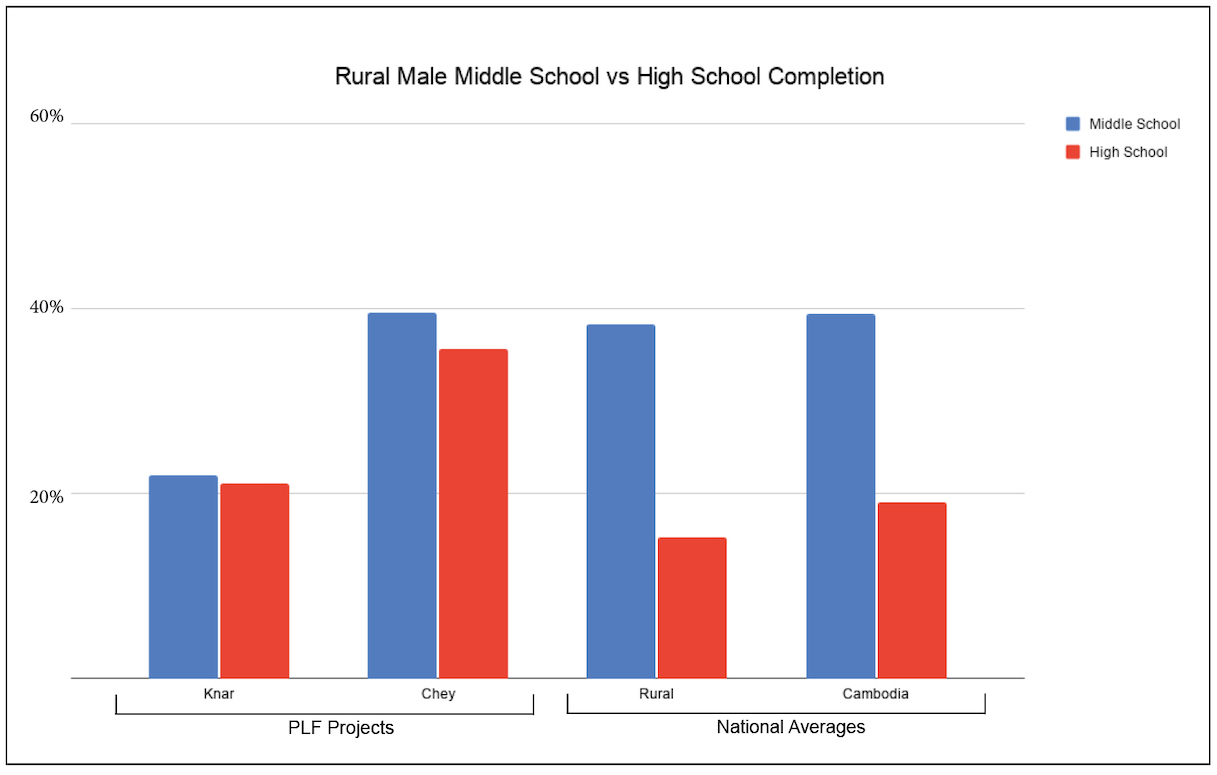
Our rural boys who do finish middle school are highly committed and highly engaged. As you can see, only a very small percentage of them fail to complete high school once they have finished middle school. They become some of our best University scholarship candidates because early on, they had to overcome great hurdles to be part of this blue bar. The contrast with what normally happens with boys in rural areas between the end of middle school and high school is stark.
Compared to the rural and national average we are miles ahead in our retention during high school. Even at Knar, students are comfortably above national averages for rural high school graduation rates. But not at middle school. That number is dismal.
The work is at Knar. And it’s at middle school. Stay tuned for what we’ll do next.
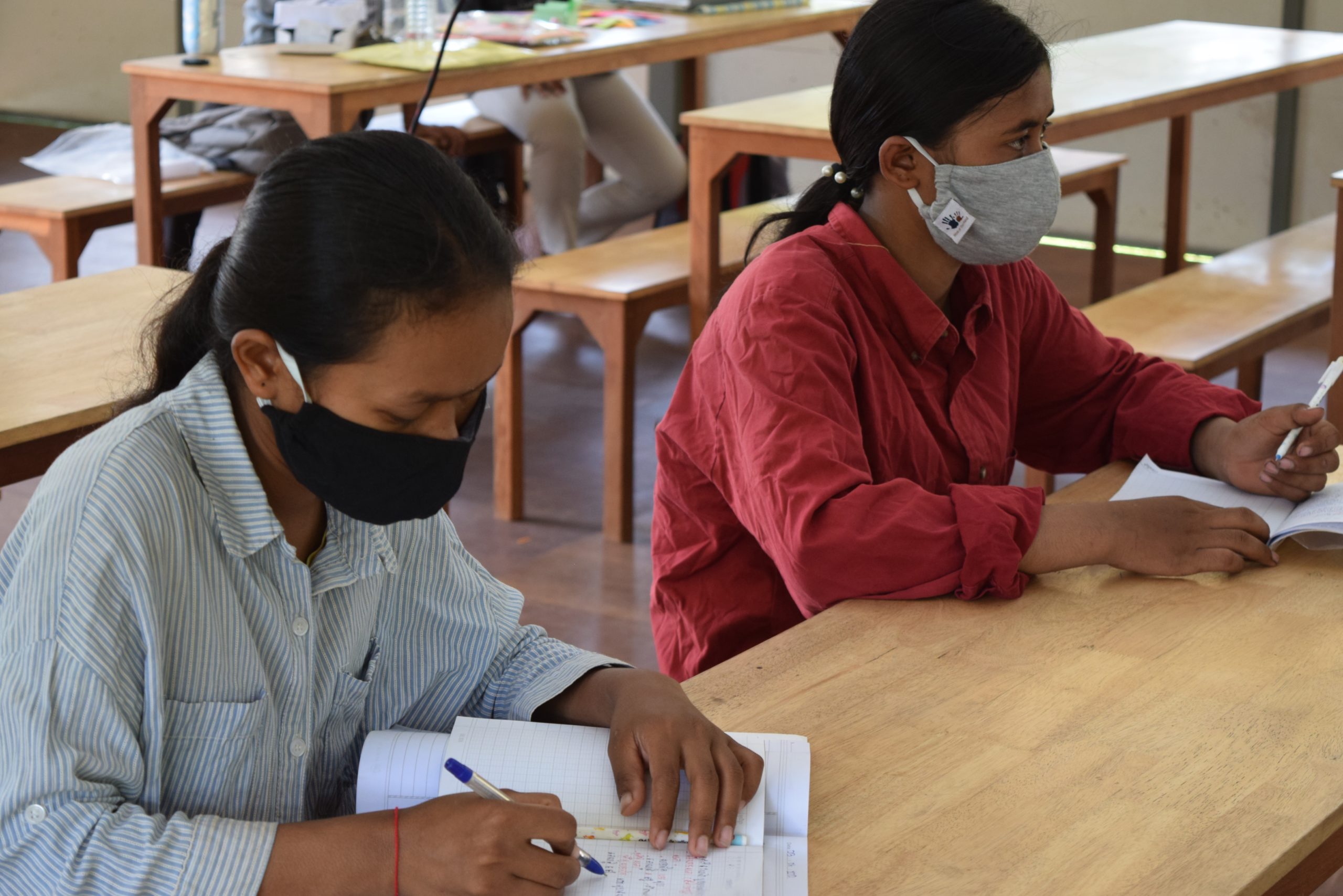
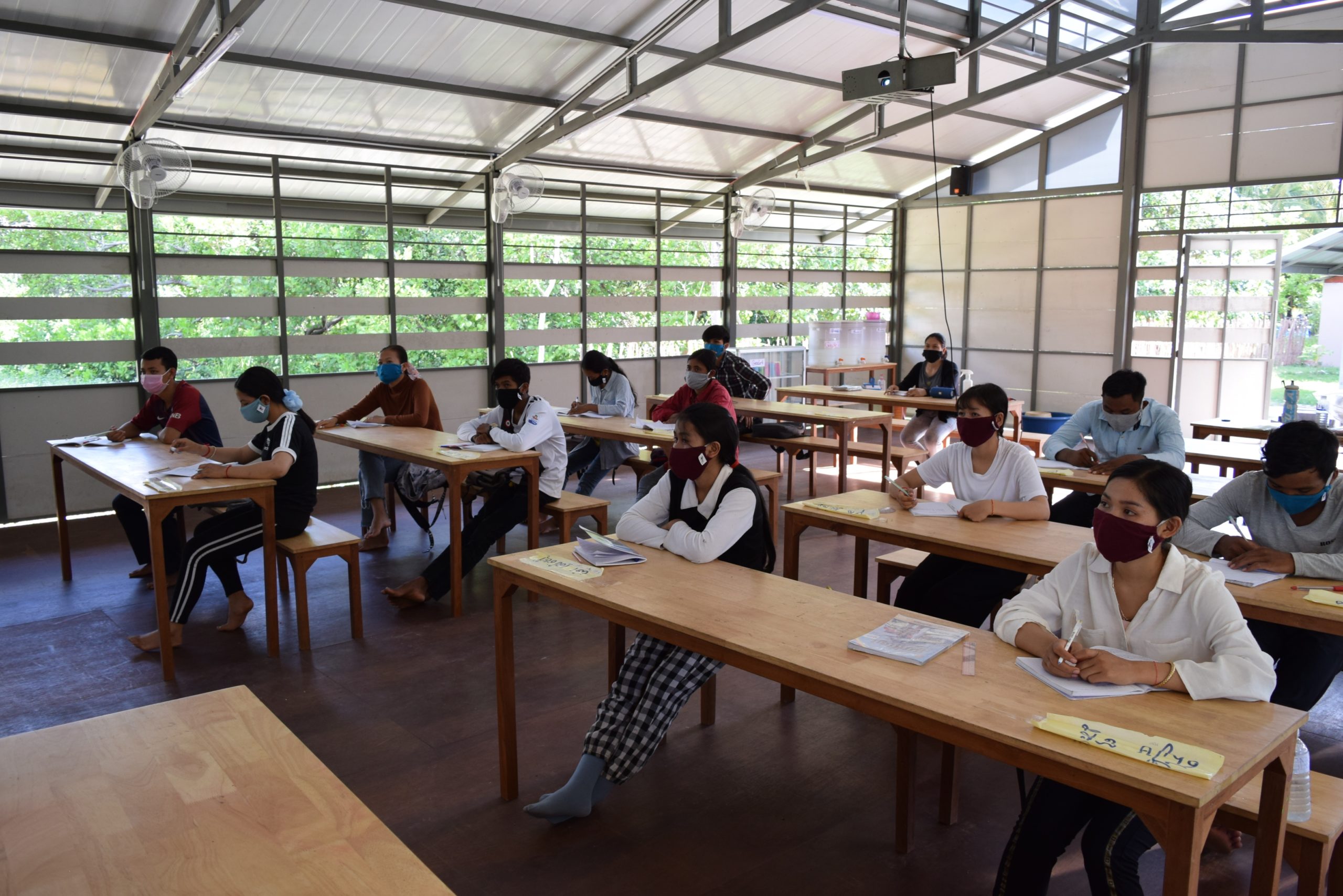
Here at PLF we love data. We love the things it shows us, even if it’s a problem. Maybe especially if it’s a problem. It means we know what to work on and how to measure the impact of the things we try. The problem is that these numbers take years to shift. It’s a long game when it’s done right.
If we keep doing what we’re doing with our high school students, keeping them engaged as we’re currently doing, then a jump in completion rate in middle school should in turn positively affect our high school completion rate too.
Goals are good! Let’s go!
By Graham Smith, Tertiary Education Director
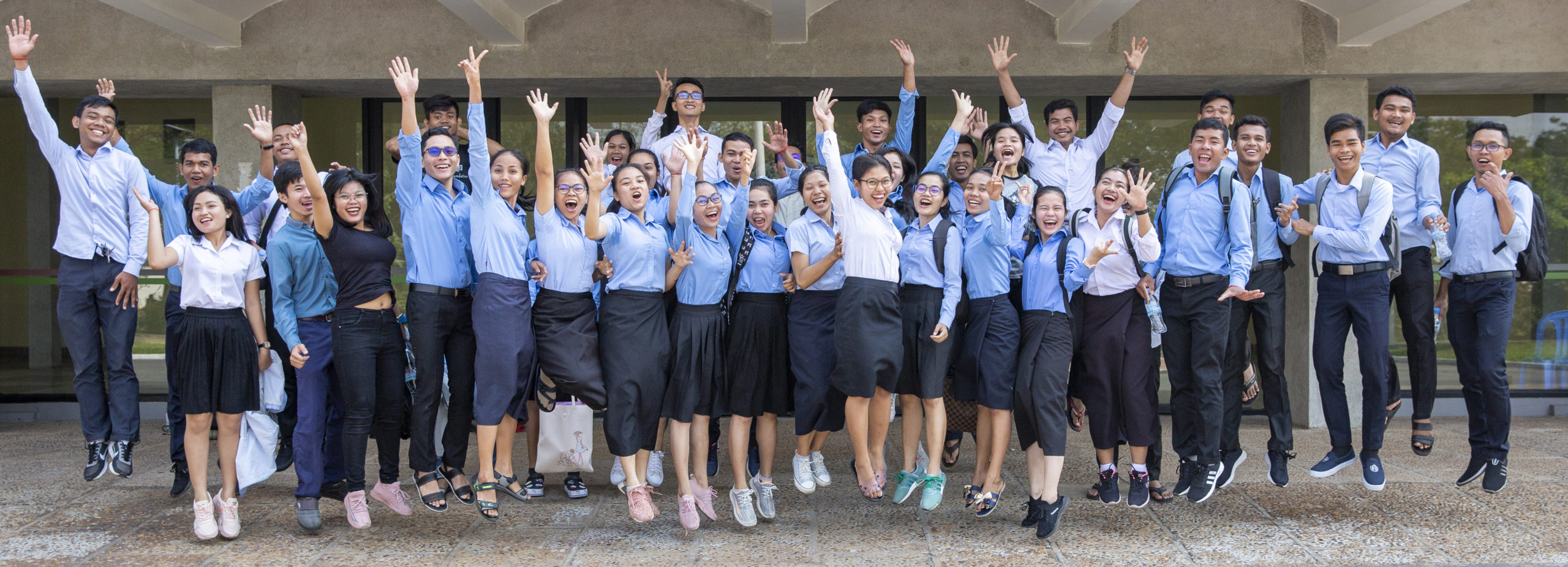
Like the sound of our programs and want to get involved, but not sure how?
For as little as $10 a month, you could contribute to the ongoing education of our students. $120 goes a long way in Cambodia: that’s 5 village children on the road to education, with access to school and clean drinking water for half a year. Or a million other things, all of which coalesce into the tools needed for life to change for the better!
Follow our Instagram or Facebook accounts. Like, comment on or share our posts – Do it. It’s free. And it’s a huge help for us!
Have some questions?
Email us for a chat at [email protected]

Recent Comments